The concept of " Horsepower” has been known to all motorists for a very long time. Previously all hard labour performed with horses. Later, the first steam engine was created, which replaced them, and to determine its power, they resorted to comparison with the number of horses. Now horsepower, as a unit, is gradually being replaced by a new value of the SI measurement system - watt or kilowatt.
Recently, most European countries, including Russia, it is customary to designate the power of vehicles not as usual in horsepower, but in units - kilowatts.
In this regard, very often it is required to find out the number of kilowatts that corresponds to a certain value of horsepower and vice versa.
How to convert kW to l / s?
To convert from kW to l / s and vice versa, you can use the calculator:
One horsepower in our country, like in Europe, is 0.735 kW, or vice versa - 1 kW will be equal to 1.36 l / s (many people use the value 1.4 to calculate in whole numbers).
For example, for a car with a power of 70 horsepower, the power in kilowatts will be 51 (70 l / s is equal to 70 / 1.36 or 51 kW).
Where did the value of 0.735 kW come from?
As has been customary for a long time, scientists obtained all the values in the course of experiments. So with a value of 735 watts.
It was taken as a basis that one horse could pull the weight of the total weight load 75 kg at a certain speed of 1 m / s. One horse, as it has already happened, is considered to be 1 l / s. When converted to watts and kilowatts, it is not difficult to get the following, that 735W will be equal to 1 l / s.
If rounded to integer values, we get that 1l / s is equal to 0.74kW.
Now in all passport documents for a car, namely in registration certificates, as a rule, two values \u200b\u200bare indicated at once - in kilowatts and the corresponding value in horsepower. This, in turn, is convenient and does not require additional translations.
So,
- in order to convert from the value - l / s to the value - kW, you need to divide the value of l / s by 1.36 (a car with a power of 170 l / s corresponds to 125 kW).
- And vice versa, if you need a conversion from kW to l / s, then you need to multiply the kW value by 1.4 (vehicles with a power of 88 kW correspond to 120 l / s).
Horsepower(Russian designation: l. With.; English: hp; German: PS; French: CV) is an off-system unit of power.
In the world there are several units of measurement called "horsepower". In Russia, as a rule, horsepower means the so-called metric horsepower”, equal to exactly 735.49875 watts.
Currently, in Russia, horsepower is formally obsolete, but is still used to calculate transport tax and OSAGO. In Russia and in many other countries, it is still very widespread in the environment where engines are used. internal combustion(cars, motorcycles, tractor equipment, lawn mowers, trimmers).
In the English ("Imperial") system of measures, the pound-feet per second is considered the unit of power, but in reality it is no longer used in England, and in the USA it is used extremely rarely.
horsepower benchmarks
IN Russian Federation the horsepower value is set to 735.499 watts.
In most European countries, horsepower is defined as 75 kgf / , that is, as the power expended in uniform vertical lifting of a 75 kg load at a speed of 1 meter per second with standard free fall acceleration (9.80665 m / s²). In this case, 1 l. With. is exactly 735.49875 watts, which is sometimes called metric horsepower (German designation. PS, fr. ch, netherl. pk ), although it is not included in the metric system of units.
In the US and UK in automotive industry more often still equate horsepower to 745.69988145 watts (eng. hp), which is equal to 1.01386967887 metric horsepower.
The US also uses electric horsepower and boiler horsepower ( Boiler- are used in industry and energy).
Ratios
To calculate the engine power in kilowatts, use the ratio 1 kW = 1.3596 liters. With. (1 hp = 0.73549875 kW).
Story
Around 1789, the Scottish engineer and inventor James Watt coined the term "horsepower" to refer to how many horses his steam engines could replace. In particular, it is claimed that one of Watt's first machines was bought by a brewer to replace the horse with it, which powered the water pump. According to popular legend, the brewer decided to cheat by choosing the strongest horse and forcing it to work to the limit of its strength. Watt accepted and even exceeded the figure received by the brewer, and it was the power of the built machine that became the standard, despite the fact that real power, which the horse develops during normal operation for a long time, much less - according to some estimates, one and a half times.
At that time in England, barrels with a volume of 140.9 to 190.9 liters were used to lift coal, water and people from mines. There was (and there is) a unit of mass barrel (unit of volume), based on the mass of a typical barrel (eng. barrel) with a load that weighed 380 pounds(1 pound = 0.4536 kg), i.e. 1 barrel = 172.4 kg.
Naturally, only two horses could pull out such a barrel by a rope thrown over a block. Force medium workhorse within 8 hours of operation is 15% of its weight, or 75 kgf with a horse weighing 500 kg. In 8 hours, a horse with such an effort can travel 28.8 km at a speed of 3.6 km / h (1 m / s).
Observing the traditional source of energy - a horse, Watt came to the conclusion that a barrel weighing 180 kg can be pulled out of the mine by two horses at a speed of 2 miles / h (3.6 km / h). In this case, the horsepower in English measures takes the form of 1 liter. With. = 1/2 barrel 2 mph = 1 barrel mile/h (here the barrel is taken as the unit strength, but not masses). The same in smaller units is 380 pounds at 88 feet per minute. Rounding off the calculations in foot-pounds per minute, he decided that the horsepower would be 33,000 foot-pounds per minute.
Watt's calculations referred to horse power averaged over a long time. For a short time, a horse can develop a power of about 1000 kgf m / s, which corresponds to 9.8 kW or 33,475 BTU / h (boiler horsepower). According to other sources - up to 15 liters. With. at the peak.
At the Second British Congress scientific association in 1882, a new unit of power was adopted - watt (designation: W, W), named after James Watt (Watt), the creator of the universal steam engine. Prior to this, most calculations used the horsepower introduced by James Watt.
Engine power
For capacities automotive engines There are not only different units of measurement, but also different ways measurements giving different results. The standard way to measure power in Europe uses kilowatts. If the power is given in horsepower, then the methods of measurement in different countries may differ (even if the same horsepower is used).
The USA and Japan use their own standards for determining engine horsepower, but they have long been almost completely unified with others. In both America and Japan, there are two types of indicators:
Net measurement
Net engine power measurement (Italian netto - net, net). Provides for bench testing of an engine equipped with all auxiliary equipment necessary for operation. vehicle units: generator, muffler, fan, etc.
Gross measurement
Involves bench testing of the engine, not equipped additional units necessary for the operation of the vehicle: a generator, a cooling system pump, and so on. Gross power higher than net power by 10-20% or more than before the establishment of the federal standard in 1972 was widely used by North American car manufacturers, overestimating engine power.
January 31, 2017 .
Horsepower in vehicle taxation
If the power is less than 100 hp. s., then, for example, in the Moscow region 7 rubles / l are paid. With. per year, and if a little more - already 29 rubles / l. With. in year. Moreover, from 101 liters. With. up to 150 l. With. the tax rate is the same. Thus, due to different values capacity, the price varies from less than 700 to several thousand rubles a year. This fact leads to annoying curiosities. Yes, power South Korean car Hyundai Accent is strictly equal to 75 kW, that is, 102 hp. With. For an American car owner, 100.7 hp would be an even more offensive figure, but in the US, the tax does not depend on horsepower. In the US, some taxes (road, environmental) are included in the price of gasoline, in addition, you have to pay a personal property tax every year, which is directly proportional to the price of the car.
In the past, in some countries (eg UK, Germany, Belgium, France, Spain) the vehicle tax was based on horsepower. In some countries, the use of power in taxation was abandoned (for example, in the UK in the forties, car dimensions were used instead of power), in others (for example, in France), kilowatts were used instead of horsepower. From those times, the expressions "Caballo fiscal" and "Cheval fiscal" remained.
In addition to using horsepower in calculations transport tax, in Russia also this species units of power used in insurance. Namely, when calculating the insurance premium for compulsory insurance of civil liability of vehicle owners (colloquially - "autocitizen").
Automakers are always looking for an edge over the competition. More often automotive companies pay attention to the power of the car, trying to attract a potential buyer. But the power of the car does not yet mean that the car is actually powerful. So a car having more horsepower can be weaker car, having less HP, but which has more torque. What is the difference between these measurements? What do they mean? Surprisingly, these dimensions are completely different in their meaning, but interconnected.
Some vehicles, with a small engine size, have a lot of power. So the record holder among the traditional atmospheric engines is sport car Honda S2000, which was discontinued a few years ago. Like the blade of a samurai sword, this sports car was very sharp and very fast.

The first models of this brand were equipped with a 2.0-liter gasoline engine, 240 hp !!! One thing is amazing that to achieve such power Japanese company succeeded without the use of turbochargers (turbines). The power that the S2000 put out was natural, thanks to the ability of the engine to run at almost 9000 rpm!!! Can you imagine what the roar of the engine was at the maximum acceleration of the car?
But if you look in more detail specifications this car, we will see that the torque is only 208Nm (Newton meter), which is comparable to low-power cars.
Despite this, the Honda S2000 was powerful car, but this was achieved only thanks to the frenzied engine speeds (which roared like the sound of an air raid siren), which were constantly near the dangerous red line of the tachometer.
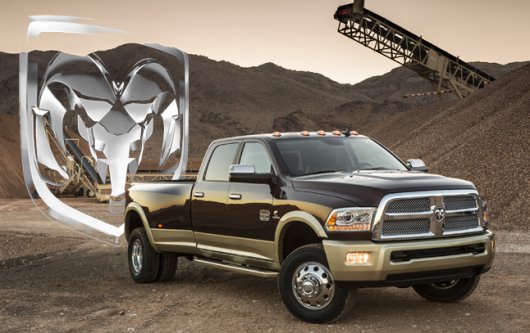
Let's take another completely opposite example - dodge car Ram 3500 Pickup. Customers can opt for a super-powerful package with a 6.7-liter Cummins diesel engine that delivers 330 hp. and a torque of 895Nm. This is very strong car, which is able to budge anything (Note auth. "Or almost everything")
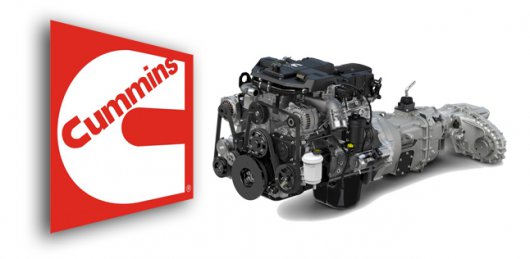
Origin of horsepower
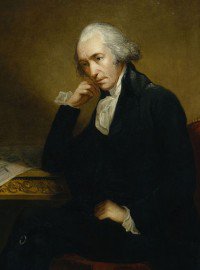 There is one a turning point in history, when one person played a huge role and contributed to the development of the world in which we now live. This man is the engineer-inventor James Watt, who started the industrial revolution in England and then around the world in the 1700s. James's most famous inventions are the foot starter and the improved steam engine, which the engineer made more efficient, powerful and productive. But that is not all. The inventor, for the first time in the world, having created a steam boiler (steam engine) came up with the concept of power, which is expressed in "Watts" (Watts), in horsepower and in torque.
There is one a turning point in history, when one person played a huge role and contributed to the development of the world in which we now live. This man is the engineer-inventor James Watt, who started the industrial revolution in England and then around the world in the 1700s. James's most famous inventions are the foot starter and the improved steam engine, which the engineer made more efficient, powerful and productive. But that is not all. The inventor, for the first time in the world, having created a steam boiler (steam engine) came up with the concept of power, which is expressed in "Watts" (Watts), in horsepower and in torque.
In fact, James White invented these concepts and the power measurement system so that when selling his steam boilers (engines), it would be easier to explain to the client how much power his boiler produces. After all, it is much easier to tell the buyer of a boiler "a steam engine will do the work of two horses" than to say in the 18th century that the power of a steam engine is N-number of "Nm" or "Pound Feet" of force. Nobody would understand.
use the power
This strength is the main thing to achieve some speed. After all, without the expenditure of strength, there will be no speed. Accordingly, the speed will depend on how much force we expended to achieve speed. For example: If we run several meters in 5 seconds and 10 seconds, then, accordingly, the force that we will spend for this short run will be different. It takes a lot of strength to run faster.
Another example: If you are moving furniture around the house, then if you want to move it faster, you need much more force than if you move furniture slowly and slowly. And strength in such work is much more important than speed.
HP and N.m.
Power and torque are inextricably linked. Since horsepower comes from torque. The formula for calculating engine power is very simple.
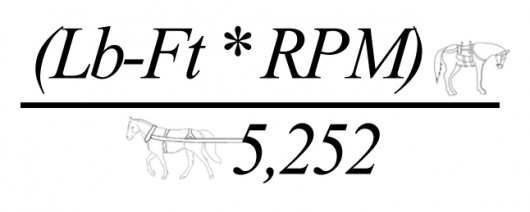
First you need a force that is expressed in Newton meters (N.m.) multiplied by 0,7376 in order to convert the values to British and American units of force (Pound-Foot), and then using the above formula, multiply by the number of engine revolutions (RPM), and then divide the resulting value by the number 5252 . As a result, we will get an approximate value of engine power, which is expressed in horsepower. Using the formula below as an example, an engine power calculation is made at a force of 100 lb-ft (1000 engine rpm). In the example, it turned out that with a force of 100 lb-ft and 1000 rpm, the engine power was approximately 19 hp.

The difference between power and strength is easy to understand with another example. If you are towing a load uphill in your car, you will need low torque, but more power for easier towing. If you want to accelerate the car from 0 to 100 km / h as quickly as possible, then you need to maximum amount engine speed and not very much power to accelerate the car in a short period of time. But the more power there is, the faster you will accelerate the car to 100 kilometers.
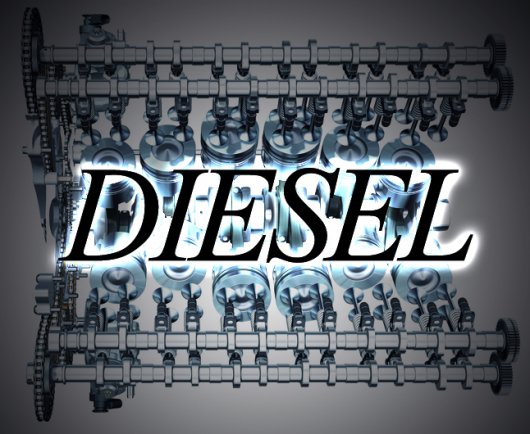
Therefore, as a rule, various cargo and lifting equipment is equipped with diesel engines, which have more traction, but not a high maximum engine speed compared to gasoline power units. Diesel engines are capable of moving vehicles that have a huge mass. But such vehicles accelerate very slowly from a standstill due to a small amount of hp.
That's why the Honda S2000 can take off and accelerate to 100 kilometers per hour in about 6 seconds, the Dodge RAM 3500 can tow a load of more than 8000 kilograms (on a trailer). This is the absolute difference between torque and horsepower.
In vehicles, there is another element that helps the car to transfer torque to the wheels - a gearbox, which is designed to transmit maximum torque at a certain speed. For example, tractor tractors and tractors for transporting heavy loads in trailers are equipped with large diesel engines that have high torque and high force, expressed in Newton meters (N.m.). But such engines do not have a large number of Horse power. Such engines are not designed to accelerate the vehicle to high speed, but designed to carry heavy loads. Some of these tractors are equipped with 10 step boxes gear shifting.
So power and torque are closely related directly to each other. Horsepower depends on the torque (force N.m.) and on the number of revolutions per minute of the engine.
Torque is essentially the force and power with which a certain work can be done. And the less time it takes to complete (or set a certain speed), the greater the power of the car, which is expressed in horsepower.
A car that can travel 1.5 kilometers from a stop in 4 seconds needs more power than a car passing the same segment in 12 seconds.
The godfather of the famous unit "Horsepower" was the great English inventor of the 18th century, James Watt, a member of the Royal Society of London and the Paris Academy of Sciences.
For many years, Watt struggled to improve steam engines, and it was thanks to his work that by the 19th century the entire industry switched to a new "draft power" - steam engines! Mines, manufactories, steamboats, steam locomotives, automobiles, airplanes and even steam motorcycles - puffing machines were used everywhere. steam engines, which made the wheels and shafts of mechanisms spin briskly! The brainchild of J. Watt - the steam hammer has taken a leading place in metalworking enterprises, the era of steam heating has come, also invented by J. Watt! Technological progress was advancing, so where did the antediluvian come from already at that time unit of power"horsepower"?
And what would a person do in our time, trying to introduce something new and unknown? How to convince an entrepreneur that he cannot do without your invention?
So James Watt tried to prove the advantages of using his steam engines over the usual horses, on which all the technology of that time “held”.
After so many years, it is already difficult to reliably determine with the owner of which enterprise Watt agreed to replace horses with steam engines, what kind of horses they were: small ponies or tall rosinantes, but the agreement was concluded. J. Watt had to prove that in the same time his machine would do no less work of lifting loads than a strong horse! Do you think the master trusted Watt to test? By no means! He himself for 8 hours from under the whip supported the "working spirit" of the poor horse, which brought it to complete exhaustion. And yet, during the same time, Watt's steam engine did 4 times more work, which allowed the inventor to proudly announce that the power of his machine is 4 horsepower!
This is how the unit of power "horsepower" appeared.
So how much is 1 horsepower?
By measuring the total weight of the load lifted by the horse and the height to which it was lifted for some time, Watt calculated the power of the working horse. It turned out that for 8 hours of work in "inhuman" conditions, the horse lifted about 2,000,000 kg of cargo to a height of one meter, which amounted to 75 kilograms per second.
Let's remember the formulas mechanical work and powers: A= FxS and N= A/t.
The unit of power "horsepower" corresponds to the power of the machine, lifting every second a load of 75 kg to a height of 1 meter.
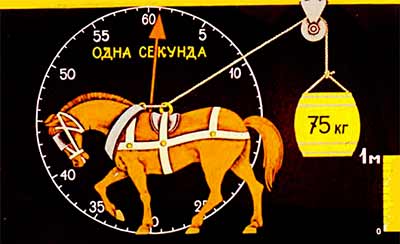
How strong is a horse?
Later it turned out that without rest the horse at such a pace would not be able to hold out for a long time. During long-term normal work, the power of the horse is only one third of the horsepower, i.e. in fact, 1 horsepower is much more than the power that the average horse can develop even for one minute.
And if you strain the horse! Then we can measure the peak power, i.e. the upper limit of the horse's power. The horse's measured peak power in a few seconds is about 14.9 hp, (sometimes referred to as "boiler" hp).
And the power of a racehorse is about 10 hp!
As one of the basic units, “horsepower lasted until the middle of the 20th century.
In October 1960 on XI General Conference on Weights and Measures A new unified SI system of units was introduced. In honor of the great scientist James Watt, the unit of power in this system was named Watt (W). And horsepower has become an off-system unit.
1 HP = 736 watts.
There are several units of measurement called "horsepower" in the world, and the values \u200b\u200bof horsepower units in different countries differ from each other.
In most European countries and in Russia, 1 liter. With. is exactly 735.49875 W (sometimes called "metric horsepower", and in English-speaking countries, horsepower is still considered equal to 745.6999 W (about 1.014 European horsepower).
Horsepower is denoted as PS (Pferdestärke) in Germany, as CV (cheval-vapeur) in France, as hp (horsepower) in England.
More than two hundred years have passed since the appearance of the unit "horsepower", and it is still widely used. For example, still car engine power measured in horsepower.
And here an interesting observation on the topic "Oh, I'll ride"!
We will assume that the power of one horse pulling a cart with a load is 1 hp.
And if more horses are harnessed to one team, how will their total power change?
It turns out that not everything is so simple!
general power will be much less than expected! Restless horses will interfere with each other and the power of each of them will be the less, the greater the number of horses in the team.
Calculated, tested and proven!
Number of horses in a team - 2
The power of each horse is 0.92
Total power - 1.9
Number of horses in a team - 3
The power of each horse is 0.85
Total power - 2.6
Number of horses in a team - 4
The power of each horse is 0.77
Total power - 3.1
Number of horses in a team - 5
The power of each horse is 0.7
Total power - 3.5
Number of horses in a team - 6
The power of each horse is 0.62
Total power - 3.7
Number of horses in a team - 7
The power of each horse is 0.55
Total power - 3.8
Number of horses in a team - 8
The power of each horse is 0.47
Total power - 3.8
Here I am writing like a horse ...
And what is the "horsepower" of a person?
The power of an ordinary person, measured in horsepower, is only about 0.04 hp, and very rarely reaches 0.25 hp for the very strongest. But! Under exceptional conditions, a person can develop peak power up to 1 hp for a short time.
But it is estimated that when digging the ground, a person does the same work in about an hour as a person does when walking, doing 5 km per hour. Therefore, the power of the digger is at most 0.1 horsepower, i.e. the average power of a person during continuous work is about 80 W, i.e. about 0.1 HP
And in conclusion, the words of the famous physicist Soddy:
“From some points of view, the horse is extraordinary useful machine. What its effect, we did not imagine until the cars appeared, and instead of the two horses usually harnessed to the carriage, it turned out to be necessary to harness at least 12 or 15, otherwise the car would stop at every hillock.
So, long live the horse and "horsepower"!
1 kW is equal to 1.3596 hp. when calculating engine power.1 HP is equal to 0.7355 kW when calculating the engine power.
Story
Horsepower (hp) is a non-systemic unit of power that appeared around 1789 with the advent of steam engines. Inventor James Watt coined the term "horsepower" to show how economically advantageous his machines were to draw power. Watt concluded that, on average, one horse lifts a load of 180 pounds 181 feet per minute. Rounding off the calculations in pound-feet per minute, he decided that the horsepower would be equal to 33,000 of these same pound-feet per minute. Of course, the calculations were taken for a long period of time, because for a short time a horse can "develop" a power of about 1000 kgf m / s, which is approximately equal to 13 horsepower. This power is called boiler horsepower.In the world there are several units of measurement called "horsepower". In European countries, Russia and the CIS, as a rule, horsepower means the so-called "metric horsepower", equal to approximately 735 watts (75 kgf m / s).
In the automotive industry in the UK and the US, the most common hp. equate to 746 watts, which is equal to 1.014 metric horsepower. Also used in US industry and power is electric horsepower (746 W) and boiler horsepower (9809.5 W).







